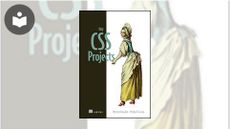Beginning Web Programming with HTML, XHTML, and CSS, Second Edition
- 12h 6m
- Jon Duckett
- John Wiley & Sons (US)
- 2008
Offering a new approach to a familiar topic, this book teaches you how to create pages for the web as it exists today—and how it will be for the foreseeable future. The time for using only HTML coding to write a web page is gone. As the Web has advanced, so have the technologies you need to learn in order to create effective and attractive web pages. This beginning guide reviews HTML and also introduces you to using XHTML for the structure of a web page and cascading style sheets (CSS) for controlling how a document should appear on a web page.
Updated with modern examples, the book explores the evolution of web browsers and how they reflect the way web pages have developed. You'll learn how to take advantage of the latest features of browsers while still making sure that your pages still work in older, but popular, browsers. In addition, you'll discover how to write web pages for the many devices that are able to access the web. By incorporating usability and accessibility, you'll be able to write professional-looking and well-coded web pages that use the latest technologies.
What you will learn from this book
- The different elements and attributes that make up HTML and XHTML and how to use them to write web pages
- Ways to use CSS to make your pages attractive and easy to use
- The basics of JavaScript so you can add interactivity to your web pages
- How to put your site on the Internet, find an audience for it, and get search engines to recognize it
Who this book is for
This book is for anyone who wants to create web pages or for those who want to improve their web-design skill level. No prior programming or web coding knowledge is assumed.
About the Author
Jon Duckett published his first web site in 1996 while studying for a BSc (Hons) in Psychology at Brunel University, London. Since then, he has helped create a wide variety of web sites for companies of all sizes. He has also co-written more than ten programming-related books on topics from ASP to XML (via many other letters of the alphabet), covering diverse aspects of web programming including design, architecture, and coding.
In this Book
-
Creating Structured Documents
-
Links and Navigation
-
Images and Objects
-
Tables
-
Forms
-
Frames
-
Cascading Style Sheets
-
More Cascading Style Sheets
-
Page Layout
-
Design Issues
-
Learning JavaScript
-
Working with JavaScript
-
Putting Your Site on the Web
YOU MIGHT ALSO LIKE



